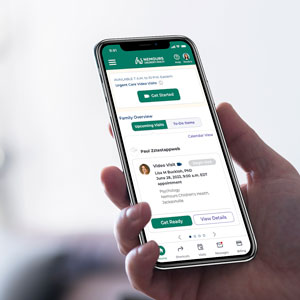Types of Childhood Leukemia
Leukemia Type Matters
White blood cells protect our bodies from infection and diseases. Leukemia is cancer of the white blood cells, but there are several different types of childhood leukemia. Although we can cure most kids and teens with leukemia, the type your child has affects how it is treated.
Acute vs. Chronic Leukemia
Leukemia happens when white blood cells don’t develop normally. Like people, cells are born, grow up and eventually die. Leukemia is either acute or chronic, depending on when these cells go haywire:
- Acute leukemia: Acute leukemia happens when white blood cells stop developing when young. Acute leukemia comes on quickly and spreads fast, which means you should treat it as soon as possible. At Nemours Children’s, we diagnose leukemia within days so your child can start treatment quickly. Acute leukemias are more common than chronic leukemias.
- Chronic leukemia: Chronic leukemia happens when white blood cells start maturing and then stop. Since it grows slower than acute leukemia, it doesn’t always need immediate treatment. When it does, treatment is usually lifelong.
Types of Pediatric Leukemia We Treat
We specialize in treating all types of childhood leukemia — even if they need more complex care. Types of leukemia in children include:
- Acute lymphoblastic leukemia (ALL). Childhood ALL is the most common type of pediatric cancer. Lymphoblastic refers to the kind of white blood cells (lymphocytes) the cancer affects. ALL has two main subtypes: B-cell ALL (which accounts for most childhood ALLs) and T-cell ALL. Childhood ALL is also known as acute lymphocytic or lymphoid leukemia.
- Acute myeloid leukemia (AML). Pediatric AML makes up about one-quarter of all childhood leukemias. It affects white blood cells called myeloid cells. Doctors see all types of acute myeloid leukemias in children, including rare subsets like, high risk AML, AML in Down syndrome, juvenile myelomonocytic leukemia (JMML) and acute promyelocytic leukemia (APL).
- Chronic lymphoblastic leukemia (CLL). CLL is very rare in young people, but teens are diagnosed with it more than younger children. CLL is also known as chronic lymphocytic leukemia.
- Chronic myeloid leukemia (CML). CML is rare in children. It’s also known as chronic myelogenous leukemia. Doctors treat CML with a lifelong medication that kids take by mouth daily. Through our clinical trials for children with leukemia, we’re seeing if we can take kids off the medicine sooner.
Leukemia Care at Nemours: What to Expect
If we suspect a child has cancer, it’s all hands on deck. Most children get a detailed, accurate diagnosis within a few days. Learn more about diagnosing leukemia in children.
During this time, your child’s team of pediatric cancer experts offers support and takes time to answer your questions. You also benefit from our:
- Special expertise in all leukemia types. Our survival rates and outcomes for ALL and other types of leukemia in children are better than the national average.
- Easy access to care. We make it easy to get the care and services your child needs. Our childhood cancer resources and support services include financial help and providers who speak Spanish and other non-English languages.
- The most effective treatments for all leukemias. We offer all available evidence-based therapies for leukemia, including breakthroughs that make treatments safer. We also specialize in advanced treatments for leukemia relapse (when leukemia returns), including CAR T-cell treatment for leukemia.
- One-on-one attention with national and international leukemia experts. Our national leukemia experts are at your service. They set aside extra time to talk through any questions and concerns that come up throughout treatment.


